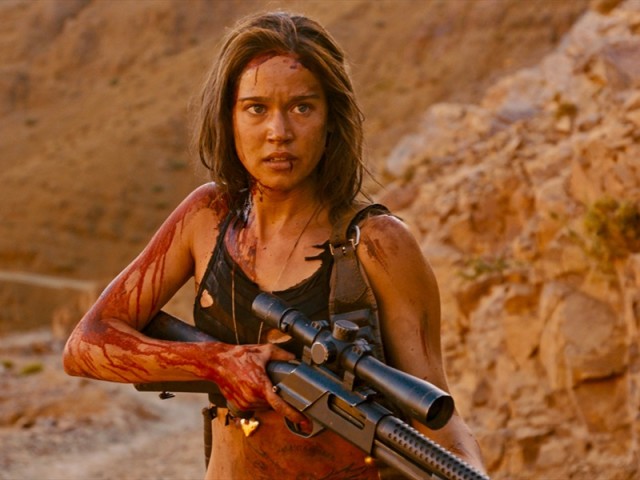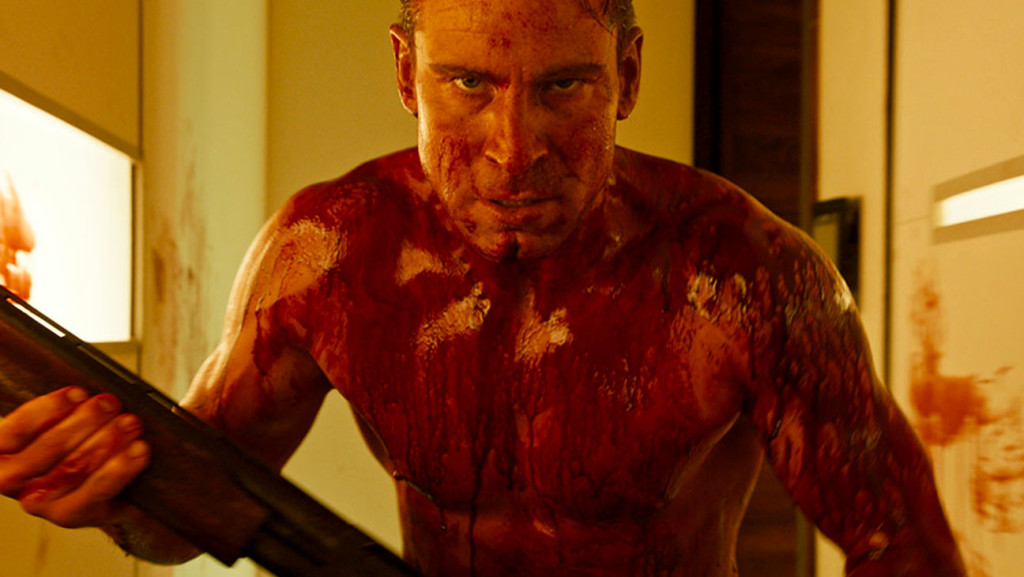Genre: Thriller
Premise: After a young woman is left for dead in the desert by three men, she hunts them down one by one.
About: Writer-director Coralie Fargeat’s surprising first film is generating a lot of conversation. Is it a “synthesis of exploitation and feminism,” like New York Times film critic A.O. Scott labels it? Or is it the embodiment of poor taste? The film is out now on video-on-demand so you can decide for yourself.
Writer: Coralie Fargeat
Details: 108 minutes
Today I tackle the ultimate screenwriting question, the one that will determine whether you toil away in amateur screenwriting obscurity for the rest of your life or become one of the lucky few to ascend into the Hollywood ranks.
How do you take a premise that has been done so many times before and make it fresh?
Because let’s be honest. Every story has already been told. Which means whatever script you’re working on, it’s going to be something audiences have seen dozens, if not hundreds, of times before. Your ability to find a fresh angle on these stale ideas is the key to your success.
There’s no setup that’s been around longer than the revenge thriller. Bad guy does something horrible to hero or people hero knows. Hero enacts revenge. If there is ever an idea that embodies “been there, done that,” it’s this one.
So before I turned on “Revenge,” I queued up several Youtube videos I’d been meaning to get to. Based on prior experience, this flick would be lucky if I didn’t turn it off by the 20 minute mark. But the only thing that got turned off was my skepticism. “Revenge” is one of the best revenge films of the 21st century. So much so that I didn’t look at the time once during the film. Afterwards, I sat there in a daze. How was it that a writer could create something so exciting out of an idea so unoriginal?
The plot follows a French millionaire, Richard, who whisks his American girlfriend, Jen, away to his trendy desert oasis for the weekend, where the two plan a wild 48 hours of romance.
Their plans are interrupted, however, when Richard’s creepy hunting friends, Stan and Dimitri, stop by a few days before their annual hunting trip. Stan and Dimitri are surprised to see that Richard is keeping female company considering the fact that he’s married with children. The four of them end up having a fun night, though, drinking and dancing until they pass out.
The next morning, while Richard is off taking care of some hunting license issues, Stan attempts to seduce Jen, and when she refuses, rapes her. When Richard comes back, Stan cops to the crime.
But instead of beating the life out of his supposed best friend like we expect, Richard worries that Jen might say something once back in the states. Fearing that his wife would find out, he decides to kill Jen. Jen catches wind of this plan early enough to make a run for it, but the guys catch up to her, cornering her at a cliff. She falls and lands squarely on an exposed spike-tree, the top of which impales her stomach.
Richard constructs a plan. Go hunting over the next couple of days like they normally do so as to have a cover story, and then they’ll clean up the Jen mess afterwards. However, when they later arrive at the tree that impaled Jen, she’s no longer there. Over the next 24 hours, Jen will hunt these men down, one by one, to enact her revenge.
Let’s get back to my original question: How do you take a premise that’s been done so many times before and make it fresh?
The answer is simple. You color as many of the elements differently as you can.
Each screenplay is a combination of individual elements: characters, set pieces, circumstances, locations, dialogue, plot points, themes, twists. The more of these elements you can color with a different shade, the more original your take on the premise will be.
Take the location. I’ve seen revenge thrillers that have taken place in cities. I’ve seen revenge thrillers that have taken place in forests. Until this film, I’ve never seen a revenge thriller that takes place in a desert.
That one choice immediately separates Revenge from its predecessors. Not just visually. But there’s nowhere to hide in a desert. And since these movies are all about hiding, it forces the writer to find unique ways to frame the kills.
The setup to this film was also a different shade. I was assuming one of two things would happen. Either we’d learn that all three men had planned to bring Jen out here to rape and kill her. Or that after Stan raped her, he would also kill Richard to prevent retaliation.
These are the kinds of blunt choices most screenwriters make.
The reveal that Richard is married changes everything. After Stan assaults Jen, Richard is furious with him, but not enough to jeopardize his marriage and family. This puts him in a mindset where Jen is now a liability. He doesn’t want to get rid of her. But circumstances dictate that he must.
The problem with so many revenge thrillers is that they’re painted with this blunt brush. “I must kill you because me bad guy.” Creating a more complicated situation, one that involves a little more nuance, helps make the story feel more realistic. The fact that Richard is doing this to protect something that it’s his fault he jeopardized in the first place makes him so much more sinister.
In addition to shading the elements differently, the script aces the basics as well. In any revenge thriller, you need great villains. If we don’t hate the villains with every fiber of our being, we’re not going to be invested in the revenge. The act of what was done to Jen combined with the betrayal of someone she trusted was what makes us hate these guys so much. They are true villains. So of course we’re going to watch with baited breath as Jen hunts them down one by one.
But making Jen the ultimate underdog was the best choice of all. Not only is she a city girl who doesn’t know the first thing about killing. Not only is she injured beyond comprehension. But she’s going up against three HUNTERS. Three men with top-of-the-line hunting equipment and experience killing living things.
In screenwriting, the magic trick is to create the belief that there’s no way your hero can win. The odds are stacked too highly against her. That’s what keeps us turning the pages. We want to see if Jen can beat these odds. Fargeat does an amazing job of this.
I also like that it isn’t that Jen WANTS to kill these men. It’s that she HAS TO kill these men. That’s an important distinction. “Want” is fine. It drives most revenge films. The hero won’t feel complete unless the bad guy pays for what he’s done. The problem with “want” is that there’s a sadness to it. They kill the guy but what’s really been accomplished? William Monahan wrote this Mel Gibson revenge flick 8 years ago called “Edge of Darkness” that exemplifies this problem. Gibson hunts down and successfully kills the people who killed his daughter, but we don’t feel any better at the end. The daughter is still dead.
The reason that “has to” is so great is because the revenge has a purpose. Our hero doesn’t survive UNLESS she kills the villains. And that ultimately makes the kills more satisfying. “Revenge” accomplishes this rare feat of making a revenge film feel good when it’s all said and done.
Probably the biggest takeaway here is the reminder that what you do in the first act – particularly with the characters – is the key to making the rest of the story work. The last 60% of this movie is pure pursuit. Very little dialogue. Just Jen hunting the men and the men hunting her. But we don’t get bored because Fargeat nailed that first act. She made us love the hero. She made us hate the villains. She constructed a scenario that was just unique enough so that we feel like we’re watching something original. And from there, all we care about is Jen winning.
[ ] What the hell did I just watch?
[ ] wasn’t for me
[ ] worth the price of admission
[x] impressive
[ ] genius
What I learned: Something we talked about with Black Panther was making the dynamic between protagonist (T’Challa) and antagonist (Killmonger) personal. That helped separate Black Panther from so many other comic book movies. Same deal here. If these were random men who assaulted Jen, we wouldn’t care as much. It’s that it was a man she trusted and cared about that’s doing this to her that makes us so angry. That makes the revenge so sweet.
By the way, Black Panther is another great example of painting familiar scenarios with different colors to create an overall original experience.




